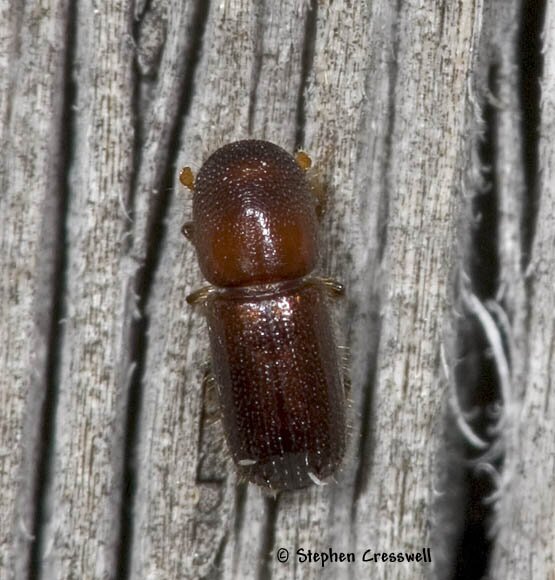
Family: Curculionidae
Subfamily: Scolytinae
Length: 3 mm
Species in the Ambrosia Beetles group have an interesting life history. Adults construct tunnels in wood, and the females bring a favored species of fungus into the tunnels. The fungi begins to grow and flourish, and both larvae and adults feed on it.
Research with beetles in the genus Xyleborus shows that often one or two secondary fungi grow alongside the favored species, and if need be the larvae can develop into adults while eating the non-favored fungus.
Lekh Batra (1966) asserted his belief that Ambrosia Beetles descended from beetles that ate wood. The beetles may have accidentally introduced a fungus that began to flourish in the wood, and gradually the beetles and their descendants began to specialize in the fungus rather than the wood.
The relationship between the beetles and the fungi is one of mutualism, where the beetles carry the fungi to newly prepared locations where it will flourish, and the fungi provide the beetles with nutrients needed to live and reproduce.
The economic importance of Xyleborus beetles is that their fungi galleries can stain saw logs dark. Experienced lumbermen attempt to saw up Xyleborus-infested logs very quickly in the summer months, before the beetles have time to construct galleries and grow the fungus in the felled timber.


